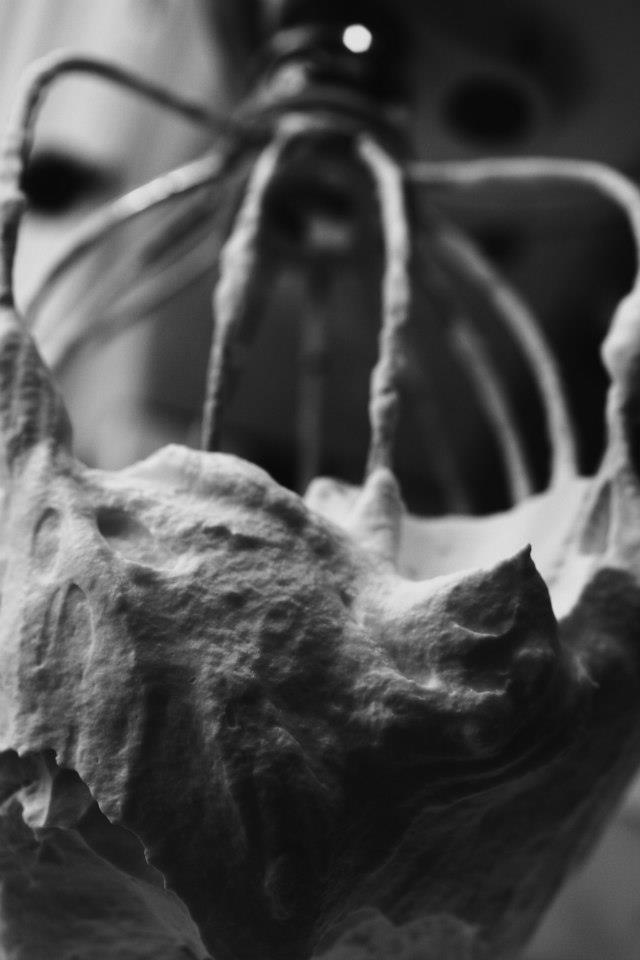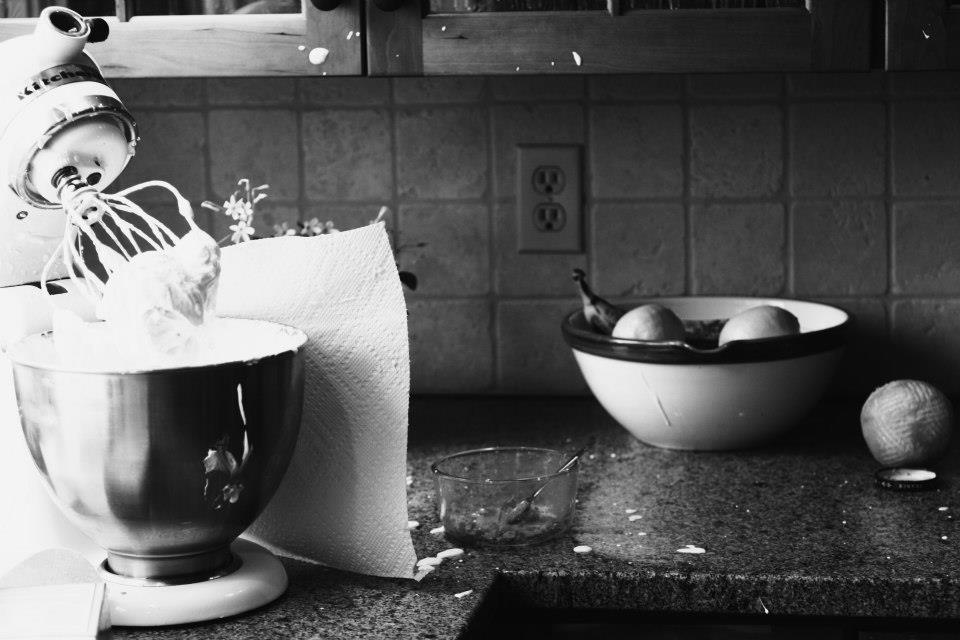Spring always reminds me of homemade whipped cream, when my Mom used to scoop generous dollops of it onto my homemade birthday cake and garnish the rim with a band of shredded coconut. Remember as a child the taste and satisfaction of real whipped cream? Artfully scooped up with a finger or licked eagerly from a whisk, this fluffy topping is just heavenly. It may be difficult to recall as decade after decade, grocery stores have only carried compressed, processed whipped cream and many of us have completely forgotten how to make whipped cream from scratch. For the past few years we have been blending up our own whipped cream using raw dairy and the highest quality ingredients...

Making Real Whipped Cream
As a society we have spent years altering nature's perfect foods to create deceiving artificial versions that fit into daily calorie tallies and fat gram check lists. Hence the strange collection of lite, artificial and fat free "whipped topping" concoctions that you find lining grocery store shelves. Laced with synthetic flavors, stabilizers, thickeners, preservatives and other completely unrecognizable gases and chemicals, these dessert impostors are the food chemists' ultimate experiment. How backwards it all is! Instead of squirting this nasty foam from environmentally un-friendly disposable cans, return to the rich tradition of making whipped cream from full-fat dairy. It's gratifying and simple, and as our ancestors have always known (and recent scientific studies have proven), the saturated fats found naturally in whole dairy are good for you!
Cream from the milk of cows contains healthy fats that provide cell membrane integrity, encourage resistance to oxidation, aid in the assimilation of other nutrients, normalize hormone production, and enhance cellular metabolism. Especially during this time of year, when lush green grass carpets pastures, cream from grass-fed cows has a fresh taste and a delightful buttery yellow color- showing that it is rich with beautiful butterfat and vitamin K2. Raw dairy is preferable for its superior nutrient profile and complete enzyme content. Contrary to the fear mongering information that the media has disseminated, raw cream (cream that has not been pasteurized or homogenized) is a very safe and healthy food when produced under sanitary conditions. It naturally contains beneficial components that kill off pathogens, strengthen the immune system and ease digestion. Such valuable compounds include lacto-peroxidase, lacto-ferrin, specialized carbohydrates, medium-chained fatty acids, phospholipids, mucins, growth factors, beneficial bacteria and enzymes. These health-giving characteristics, along with many of the water-soluble vitamins and beneficial minerals found in fresh milk and cream, are completely ruined during the process of pasteurization- leaving behind a fractured and nutrient bereft food.
To learn more on the raw milk debate or to find local sources of raw milk and cream near you, visit Weston A. Price's companion site realmilk.com. Unpasteurized, unhomogonized, raw cream will make the most nutrient-rich, luscious whipped cream you will ever be privileged to taste. However, if you do not have access to raw cream, use the best quality heavy cream you can find. Be sure that it has not been ultrapasteurized however, as this makes whipping far more difficult.
Homemade Whipped Cream
from Nourishing Traditions
Ingredients:
2 cups heavy raw cream
1 teaspoon vanilla extract
pinch of stevia powder
In a large bowl, beat cream with whisk or electric beaters. When cream begins to thicken add vanilla and stevia powder. Continue to beat until cream forms soft peaks.
Troubleshooting Your Whipped Cream: Tips and Tricks
 So maybe the recipe sounds simple- but sometimes even the most basic kitchen tasks can turn into a total mess. Here are a few hints for making sure that you get the very best whipped cream every time you make it:
So maybe the recipe sounds simple- but sometimes even the most basic kitchen tasks can turn into a total mess. Here are a few hints for making sure that you get the very best whipped cream every time you make it:
Use Chilled Heavy Cream Cold, whole-fat cream will make the quickest and most satisfying final product. The cream must be at least 30% butterfat so that when the air is whisked in, it interacts with the fats to convert the liquid to a mousse-like texture. Ultra-pasteurized cream is much harder to whip because the proteins and fats have been destroyed in the sterilization process, making it difficult to create any shape or hold texture in the cream.
Start with a Chilled Bowl and Beaters Stick your bowl and beater in the freezer for 15 minutes before using. It is best to use a metal bowl in order to hold the cold temperature. This way, your cream will remain nice and chilled as you whip it.
Begin on a Slow Speed and Increase In order to prevent splattering cream all over your kitchen, start to whisk at a lower speed at first. After cream begins to thicken and you have added the sweeteners, slowly increase to a higher speed to get enough air incorporated into the cream.
Avoid Over-Whipping You want the cream to form soft peaks or folds when complete. This means that when you remove the beaters a peak forms, but then drops to the side and does not hold its shape. If you beat for too long the cream will start to get grainy and eventually separate out into homemade butter- which is completely delicious but probably not what you are going for.
